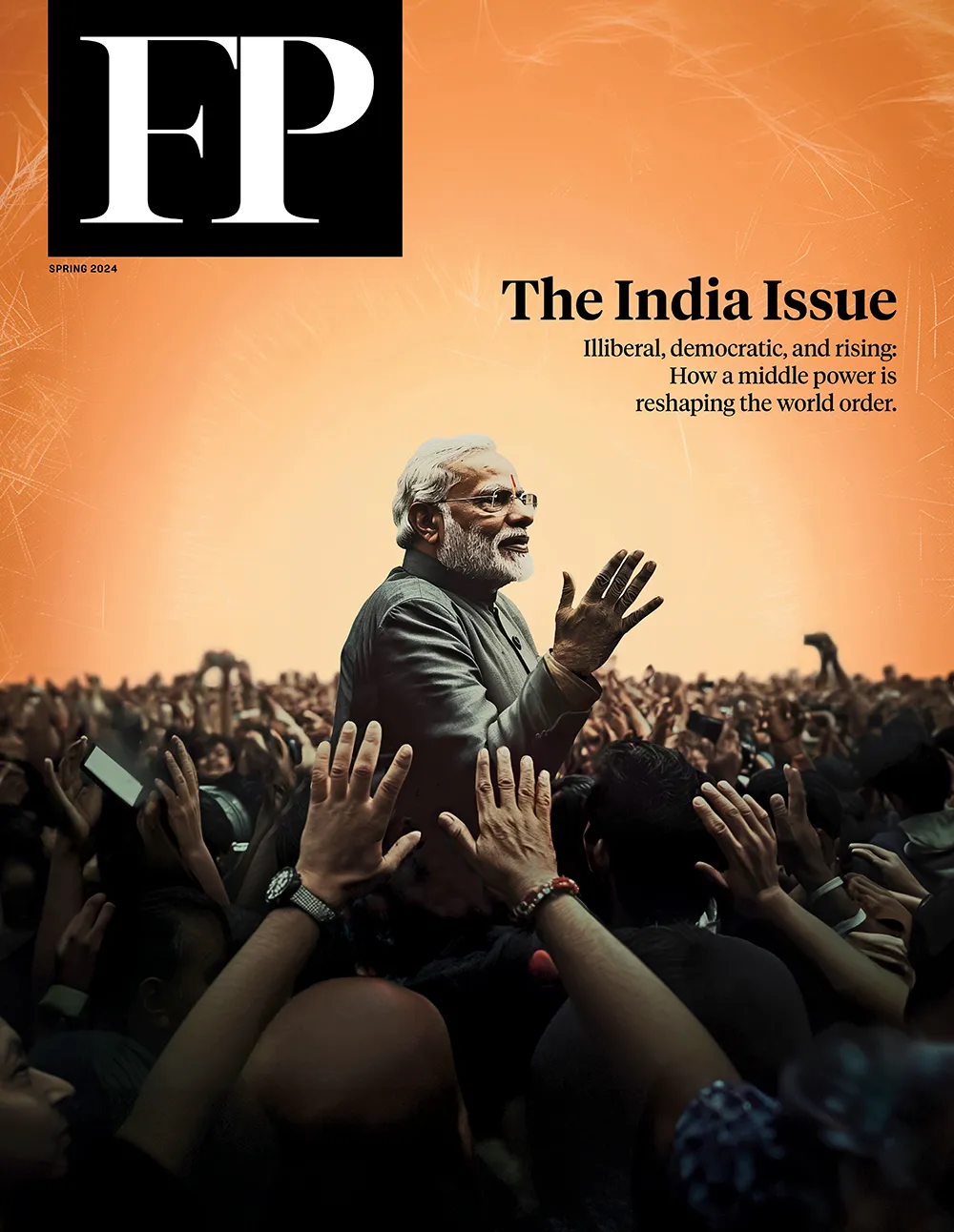How Georgia Stamped Out Corruption on Campus
First they fired the Education Ministry. Then came the hard part.
There was a joke that Georgians used to tell about a man visiting a professor. “My son is such an idiot, he will never pass your entrance exams,” the man says, to which the professor replies: “I bet you $1,000 that he will!” Kickbacks of this sort, whereby money changes hands under the table and both parties go about their business, had occurred in Georgia for decades.
There was a joke that Georgians used to tell about a man visiting a professor. “My son is such an idiot, he will never pass your entrance exams,” the man says, to which the professor replies: “I bet you $1,000 that he will!” Kickbacks of this sort, whereby money changes hands under the table and both parties go about their business, had occurred in Georgia for decades.
After the collapse of the Soviet Union in 1991, corruption thrived throughout the post-Soviet region, and it was not a transient phenomenon. “[O]nce the system gets there, it stays there,” academics have found. Despite a range of international efforts to counter corruption, the success stories have been few and far between. Indeed, the only post-Soviet state in the past decade to have made a breakthrough in this regard is Georgia, which prior to the 2003 Rose Revolution had a reputation for corruption that was second to none in Eurasia.
By that year, Georgia’s 4.3 million citizens lived in what Transparency International ranked as one of the world’s most corrupt countries. Nearly every official transaction required a bribe. Bureaucrats administrating all manner of permits or licenses used their positions to extract kickbacks. For instance, when a member in the much-loathed traffic police pulled you over, ostensibly for some driving infraction, you would almost invariably have to pay up. Some citizens — particularly the wealthier ones — welcomed the opportunity to buy their way out of problems and annoyances. On the other side, most public servants earned such dismal salaries that supplementing their income by accepting bribes had become just a fact of life.
The situation in Georgia’s university system was no different. In the wake of the recession in the early 1990s, wages for professors had fallen to $20 to $50 a month — half of what was considered a subsistence wage. Accepting bribes seemed to be the only solution for lecturers trying to eke out a living. Many of these under-the-table “fees” were extracted during admission exams, which were organized at the discretion of the universities.
Aspiring students who somehow managed to come up with the thousands of dollars required to bribe their way into the most prestigious schools had little to worry about. At Tbilisi State University, which offered popular courses in medicine, law, and international relations, applicants paid up to $30,000 to secure admission and get top grades. Bribes were so common that one World Bank study told the story of an elderly woman who asked passersby on campus for advice on whom to approach to pave the way for her grandson’s admission.
Would-be students from privileged families who could fork out exorbitant bribes to strategic “middlemen,” or who had direct connections to leading administrators, crowded out all but the brightest students from Georgia’s principal universities. Other students opted to pursue degrees from a growing number of private universities, which, by 2004, enrolled about a quarter of all students. Only a select few of these institutions were managed according to international standards. The rest were diploma mills often run out of small apartments, or public schools whose facilities had been sublet. Here it was much less costly to get a degree.
In some institutions, corruption was so endemic that the exact “fees” for gaining admission or passing a course were widely known, recalls Bela Tsipuria, a professor at Tbilisi State University turned Deputy Minister of Education and Science after the Rose Revolution. “Although many professors were honest,” she said, “those who were corrupt dominated, since they enjoyed the trust of the rectors and senior administrators.” The latter, dubbed “Academic Barons” in a 2004 report released by the Transnational Crime and Corruption Center, were the worst profiteers. These influential stakeholders opposed reforming this retrograde system, despite protests from civil society activists and progressive students.
Georgia’s government under President Eduard Shevardnadze exhibited little political will to fight corruption, in the education system or otherwise. But, even as they waited for a political opening, forward-thinking Georgians and international reformers were busy preparing the tools they would need to tackle the problem. In 1999, the World Bank initiated an education reform project which included the creation of the National Assessment and Examinations Center in 2002. Assisted by international consultants, and trained at testing centers in Western countries, the Center’s staff learned how to develop rigorous assessment exams capable of weeding out qualified from unqualified students.
The 2003 Rose Revolution, which led to the ouster of President Shevardnadze and the ascent of his successor Mikheil Saakashvili, marked the dawn of a new political era. By winning a mind-boggling 96 percent of the vote in the 2004 presidential elections, Saakashvili received a popular mandate for sweeping change, and he followed up by giving himself vast executive powers through a series of constitutional changes. His government initiated swift and drastic anti-corruption reforms in several domains, including higher education. “We saw clearly that this was a window of opportunity, and we had to seize it,” the incoming Minister of Education and Science, Alexander Lomaia, explained.
Under his direction, the ministry was reorganized. Its entire staff was fired and new recruits were solicited through an open competition. A committee, which included the ministry’s top management, labor union representatives, and the head of the World Bank education project, then made the final hiring decisions. Though the number of employees was cut from 289 to 155, those hired were paid a decent living wage. “We had about 10 candidates for each position,” Minister Lomaia noted, “and since 60 percent of our recruits had not worked in the former ministry, the average age of our personnel decreased as well.”
These younger professionals set about implementing a wide-ranging set of reforms precipitated by the adoption of a new law on higher education in 2004. Most visibly, the right to make admissions decisions was transferred from the universities themselves to the National Assessment and Examinations Center, which designed a Unified National Examination. Applicants to public as well as private universities were henceforth to be admitted on the basis of their scaled scores on this exam, which consisted of a general aptitude test, a Georgian language and literature test, a foreign language test, and in some cases an optional math test. World Bank consultants, who had grown used to the political recalcitrance of the former government, were taken aback by the reformers’ decision to arrange the first admission exam as early as July 2005.
But the exams went ahead as planned. Ministry officials administered them at fourteen centers around Georgia under dramatic conditions. The encrypted exams had been sent to the Cambridge University printing house in the United Kingdom, sealed, and then returned to Tbilisi, where they were delivered in police cars to the vault of the National Bank of Georgia. 700 trained proctors, backed up by squads of police officers and closed-circuit television cameras (which enabled parents to watch the applicants from waiting rooms outside the exam halls), worked at the test centers to ensure fair proceedings. Observers from NGOs such as Transparency International were also present. The completed exams were scanned and stored electronically to prevent manipulation. During the final but crucial grading phase, tests were identified by barcodes rather than names, and separately evaluated by at least two assessors in order to avert bias. On top of all this, an appeals procedure was put in place for dissatisfied applicants.
These steps minimized potential points of contact between applicants and those administrating or grading their tests. Some of the measures no doubt verged on the theatrical, but the reformers deemed them necessary in order to overcome societal distrust towards the admission process, which had become emblematic of Georgia’s descent into corruption. “We could not afford to leave a shred of doubt over the fairness of the exams,” Minister Lomaia said emphatically. Over the ensuing years, the National Assessment and Examinations Center has continued to fine-tune the Unified National Examinations. Beyond the mandatory sections of the admission exams, universities can nowadays choose from a list of optional additional subjects that students must pass to be admitted, and attach “weights” to each part, giving them an indirect say over enrollment criteria.
The reformers also tried to improve the quality of higher education itself. To this end, President Saakashvili created an Accreditation Council (later reconstituted as the National Center of Education Accreditation). In January 2005, this organization began enforcing requirements that led to the closure of the diploma mills. At first, higher education institutions were evaluated according to the size of their buildings, student-teacher ratios, access to computers and libraries, and presence of a webpage. These rather blunt accreditation requirements were, however, soon refined and aligned with European standards.
Georgia’s diploma mills failed to clear these thresholds. Out of the 237 institutions that applied for accreditation in 2005, fewer than half were successful. The number of licensed higher education institutions soon shrank to 43, which led to a sharp reduction in the number of available university seats. 16,500 students were enrolled in 2005, down from 35,000 in the previous year. The demand for higher education far exceeded supply: on average, only 60 percent of applicants were able to enroll in 2005-2011. But other reforms also inspired universities to compete with one another for students. Ahead of each academic year, students were given the option of applying to several universities — and these had to vie to attract the most adept students, who obtained tuition grants redeemable at any accredited institution. “Instead of funding universities, we began funding students,” the education minister said.
Last, but not least, Georgia’s reformers sought to raise a new, more professional corps of lecturers. In the past, high-level administrators had been able to hire staff through nepotism or kickbacks, with little regard to merit. And since these loyalists were seldom retired or laid off, a “hugely inflated” cohort of aging professors ended up teaching students at Tbilisi State University, Minister Lomaia recalled. To turn this situation around, the university’s rector, Roin Metreveli, was forced to step down in 2004 amid claims of “heavy-handed rule and corruption.” Most lecturers were then fired and asked to reapply for a reduced number of better-paid academic posts through a competitive process. These measures ended the culture of impunity for those at the top, disrupted entrenched corruption pyramids, and helped to attract younger and more qualified professors to public universities.
Yet the re-hiring process proved difficult. Dismissals inevitably drew the ire of the main profiteers of the corrupt system: rectors, administrators, and some professors. Opaque application deadlines and hiring requirements at Tbilisi State University led fired lecturers to assume that well-connected aspirants were favored. Critics came to see the reforms as politicized. Many older professors saw the changes as a threat to academic independence and “traditional values.” Students supportive of the ousted rector even resorted to slandering the education minister, who prior to the revolution had run the Open Society Foundation in Georgia, as “George Soros’ spy.”
Education Minister Lomaia singled out President Saakashvili’s political support as vital for withstanding these protests, and for holding a consistent position on the reform program. One such litmus test occurred in March 2005, when students at a specialized medical high school resorted to a hunger strike to protest being forced to take the Unified National Examinations and thus losing their direct admission to the State Medical University. Though many legislators were sympathetic to the protesters, the Education Ministry held firm, and President Saakashvili sided with the ministry, saying “if you have to do it, then do it,” as Bela Tsipuria recalled. “In the end, and despite all the uproar, these events helped us showcase the status of national examinations — there were no loopholes left.”
But officials did try to ease the transition for some groups who lost out. “We did not want the reforms to be seen as a matter of political retribution,” Lomaia said. In order to create an incentive for redundant professors to exit academia, the minister unveiled an “academic stipends system,” which offered lecturers the option of retaining their salary for five years and made them eligible to seek state grants from the National Science Foundation. Deputy Minister Tsipuria estimated that about one fifth of all professors, and mostly the inept ones, opted for this program, since they knew that they were unlikely to secure an academic post in a competitive process. Thus, despite Georgia’s limited human resources, those who stayed in academia, or were rehired, were relatively strong and well-paid lecturers, held to higher standards than before.
Not everything went as planned. Students were now pitted against one another in a transparent admission procedure, opening the doors to skilled applicants from outside of Tbilisi. But they were not on an equal footing. High school graduates who had been taught in non-state languages (Russian, Armenian, or Azerbaijani) had a hard time passing the Georgian language and literature test, and often lost out in the competition. Students who passed the entrance exams, but failed to win tuition grants, also confronted economic barriers to higher education. In addition, pupils became “test-centered rather than learning-centered,” conceded Maia Miminoshvili, Director of the National Assessment and Examinations Center. Having passed the rigorous new entrance exams, some enrolled students reasoned that they had a right to their diplomas regardless of whether they worked for them or not.
Despite the challenges, the reformers’ efforts were successful. The Unified National Examination “left no mechanisms by which the interested parties stand to profit from this process,” one lecturer said. This conclusion was echoed by Transparency International, which found that 91 percent of students saw the entrance exams as an improvement, and that 80 percent felt confident that corruption during admissions would be eliminated. Experts from the National Assessment and Examinations Center soon began providing assistance to other countries in the region. The “vicious circle of systemic corruption,” Minister Lomaia argued, was replaced by a “virtuous circle of meritocracy.” In the new system, students deserved their places at Georgia’s universities. (Top-scoring entrants received an additional incentive in the form of tuition grants.) And as diplomas regained their signaling value on the labor market, more Georgians came to see education as more important than connections for getting a job.
The reformers pointed to a confluence of factors that made these accomplishments possible. The technical assistance gained by the National Assessment and Examinations Center under the 1999 World Bank project, and the political support of the government after the Rose Revolution, set the stage for their actions. In order to uproot localized corruption networks, Minister Lomaia next deemed it essential to centralize the admission and accreditation procedures. The reformers were thus able to ensure that universities had the facilities required for instructing students and gained a measure of control over the number of available university places, to which they regulated access via Unified National Examinations. To guarantee the fairness of these exams, Deputy Minister Tsipuria noted the importance of using modern technologies, such as closed-circuit television cameras in the testing centers and barcodes on the exams, to prevent collusion between applicants and test administrators.
Though Education Minister Lomaia left his post in 2007, and Deputy Minister Tsipuria followed suit in 2008, Maia Miminoshvili has stayed on (apart from a controversial interlude in 2012). As a result of these reformers’ efforts, education has come to matter in Georgia to a degree that it did not before. Tens of thousands of students who have taken the centralized national exams over the last decade owe their success to their academic performance — and not to their connections or financial resources. Could this feat be replicated elsewhere? On that the jury may still be out. But what Georgia has taught us is the importance of decisive political leadership backed up by a strong popular mandate. Without these ingredients it would have been impossible to overcome the vocal protests of corrupt stakeholders, and to do so quickly enough to nurture a new constituency that benefited from — and thus supported — the new meritocratic order. As corruption fighters around the world seek to build their own constituencies for change, they will be studying Georgia’s experience for years to come.
In the photo, Georgian State University students protest the resignation of their rector in Tbilisi on November 27, 2003.
Photo credit: VIKTOR DRACHEV/AFP/Getty Images
Christofer Berglund is an assistant professor at Malmo University’s Department of Global Political Studies.
Johan Engvall is a deputy research director at the Swedish Defence Research Agency. The views expressed here are his own.
More from Foreign Policy

Saudi Arabia Is on the Way to Becoming the Next Egypt
Washington is brokering a diplomatic deal that could deeply distort its relationship with Riyadh.

What America’s Palestine Protesters Should and Shouldn’t Do
A how-to guide for university students from a sympathetic observer.

No, This Is Not a Cold War—Yet
Why are China hawks exaggerating the threat from Beijing?

The Original Sin of Biden’s Foreign Policy
All of the administration’s diplomatic weaknesses were already visible in the withdrawal from Afghanistan.





